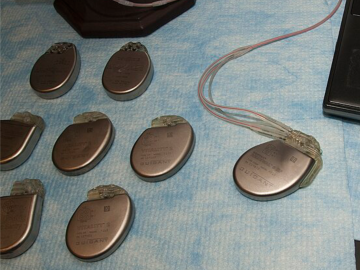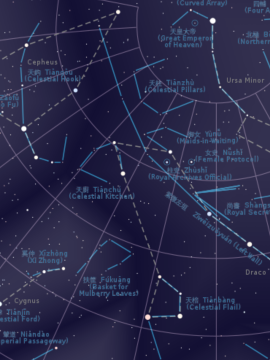Hearing Maud: an extract
Jessica White
Extracted from Hearing Maud, UWA Publishing, 2019.
One morning, a few weeks into my stay, I walk from the studio to the nearby Botanical Gardens. Weak winter light falls through the oaks and their yellow leaves spiral to the ground. These leaves make no audible sound, although a person with all their hearing might hear them scratch lightly against the gravel. Yet, as my eye follows the arc of each leaf as it spirals down, I hear the sound of its descent in my head.
This process, known as ‘auditory closure’, is the ability to use contextual clues to work out pieces of an auditory signal that are missing. I’ve had a lifetime of practice in decoding the sounds I don’t hear. If I only grasp part of a sentence, for example, I reach quickly for words and fit and discard them until the phrase makes sense. I’m not unique in using this technique. Donna, in her memoir, describes lip-reading as ‘an art rather than a science’. She elaborates, ‘I don’t actually see or read every single syllable enunciated to me. I spend much energy guessing what is being said by filling in any missing information by drawing on the circumstances of the conversation’ [i]. This practice becomes so familiar that partly deaf people extrapolate it to situations in which we can’t hear at all.
While swimming with a friend, Donna had assumed she could hear, however faintly, the vowels in his voice without her hearing aid. However, when she thought about it, she realised she couldn’t hear anything. Rather, as she writes, ‘I had tricked even myself because I am so proficient at lip-reading, and because I know what his voice sounds like when I wear my hearing aids’ [ii]. Context is essential at these moments, as is the capacity to automatically fit words into a phrase until it makes sense.
Like Donna and rhetorician Brenda Jo Brueggemann, I rely on information I derive from tone or body language. A sentence will rise at the end if it’s a question, a person’s eyes will convey if they’re happy, lying or troubled, while the restless beat of hands against a body or a man plucking at his suddenly tight collar might indicate apprehension or nervousness. Each moment is contextual, however, and only gathers meaning when taken as a whole.
This approach isn’t foolproof. When I taught a class in English literature at the university in Brisbane, I turned around from writing ‘fierce’ on the whiteboard to rows of puzzled faces.
‘I’ve heard the wrong thing, haven’t I? Did you say “fierce” or “peace”?’
‘Peace!’
‘This is why I’m a creative writer,’ I joked. ‘I’m good at making things up.’
I turned and rubbed out fierce, replacing it with peace, hiding my old disquiet at having failed in the charade of hearing.
I walk out of the gardens and through the cobbled streets of Trastevere, heading for the Tiber River. The trees are bare and spindly. Together with the overcast sky and grey river, the atmosphere is melancholic. I don’t mind it, as I did in London. The Mediterranean winter is mild, at least this December, although I’ve had to buy a new coat because after years in Brisbane I’d tossed out the ones from London. On sunny days the light falls delicately and it’s nice to be in Rome without the summer rush of tourists.
I follow the curve of the river then cross Ponte Sublicio, heading for the markets at Testaccio. I buy fruit and flowers, using as few Italian words as possible, as I can’t tell if I’m pronouncing them correctly. I like this area. Young people mill about and street art stretches up the sides of brick buildings. I cross another bridge, Ponte Testaccio, then head back to the studio where I’m staying.
Making meaning out of fragments of sound is relentless work, but it’s also inherently creative. Many artists have found that disability engenders creativity. French composer Maurice Ravel’s Concerto for the Left Hand was commissioned in 1930 by the pianist Paul Wittgenstein, who lost his right arm during the First World War. Composers such as Brahms, Saint-Saëns, Strauss, Prokofiev and Bartók created works for the left hand to showcase or strengthen it. Less well known is that these works were commissioned by pianists who had lost the use of one hand through repetitive strain injury or arthritis. Concertos like Ravel’s show how disability forces people to think laterally and become adept in other ways. It liberates them from the traditional terms for composition [iii].
Liberation. It’s not a word many would pair with disability. Yet it’s one that works. For a long time I pitied myself because I could only stand on the fringes of conversations, unable to hear enough to join in, thinking that the people around me didn’t care because they knew I was deaf and yet never included me. Like a ghost, I was deprived of a place to settle, as I belonged neither to the hearing nor the deaf world. If I tried to speak and claim my presence, I was sometimes laughed at or criticised for speaking out of turn, or for not speaking in the right way.
Yet is being a ghost so entirely impoverishing? Does not a ghost, in failing to belong, in travelling between worlds, in being forced to question and readjust, have a sensibility that is eerier, richer, more unearthly and extraordinary? Does not trying to reach another world make us more creative, more receptive to things that other people don’t realise are there?
I stopped pitying myself when I realised that deafness was also a cure: it led me to writing and it helped me to become good at my craft. Being unable to participate with ease in conversations, for example, means I observe people instead, gathering details of their clothes, stance, facial hair and expressions for character descriptions. Having lost most of one sense, my others have become stronger, so I pay attention to textures, smells and visual details such as colour and light, using them to set my scenes. Disability forces me to solve problems, to think laterally, and to see and listen for the voices that others overlook.
Inside the apartment, I switch the kettle on, fretting over the lime deposits inside it. While the water heats, I head outside to the terrace lined with pot plants. The sun is setting over the city, the dusk of pale pink and purple enriching the terracotta roofs and the Vatican’s dome.
There is also something in partial deafness, in moving between worlds, that nudges me towards the creation of story. Like the little girl who pestered her mother to piece together words on the camel-hair carpet, I want to learn, to be exposed to new sensations, to be unsettled and challenged, because this is how stories form.
[i] Donna McDonald, The Art of Being Deaf, Gallaudet University Press, Washington, 2014, p. 19.
[ii] Ibid. p. 11.
[iii] Michael Davidson, Concerto for the Left Hand: Disability and the Defamiliar Body, University of Michigan Press, Ann Arbor, 2008, p. 4.


